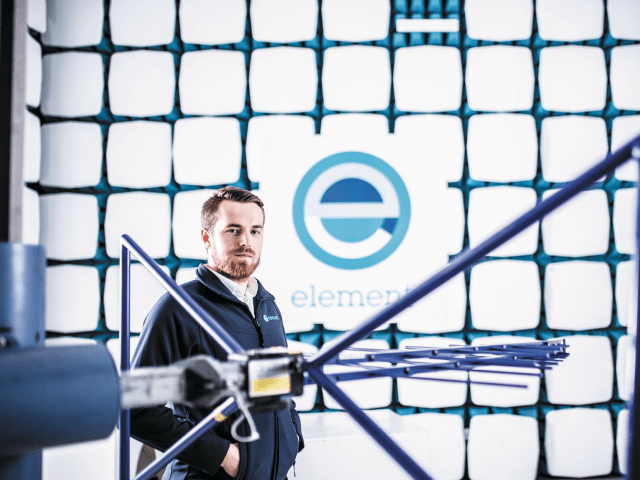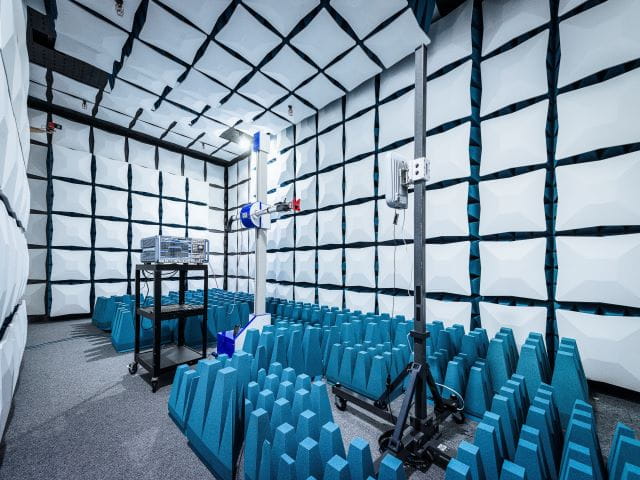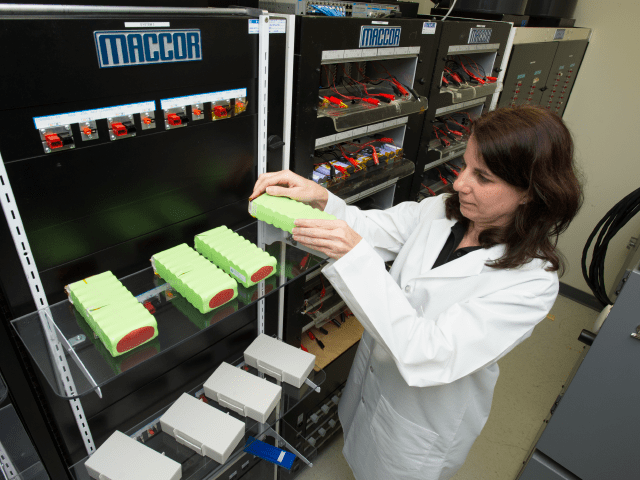Commonalities in Certification and Assessment Procedures and Requirements for Radio Devices
Instant Download
Read this White Paper as a PDF
Element Materials Technology has several certification groups. One group, Element Materials Technology – Portland Evergreen, is ISO 17065 qualified to complete Notified Body assessments for both the Radio Equipment Directive and the Electromagnetic Compatibility Directive of the European Union, Approved Body assessments for both the Radio Equipment Regulations and the Electromagnetic Compatibility Regulations of the United Kingdom, radio equipment authorizations for ISED (Innovation, Science and Economic Development) Canada, and radio equipment authorizations for the FCC (Federal Communications Commission) USA. In addition, the certification team can complete radio equipment authorizations for MIC (Ministry of Internal Affairs and Communication) Japan in partnership with the Element Materials Technology Warwick certification group. Manufacturers often seek testing and certification or assessment for some combination of the EU, Canada, the USA, the UK and Japan. This document summarizes the requirements of the schemes listed above and highlights where there are commonalities.
Background
The radio frequency (RF) spectrum is a shared resource. A global International Table of Frequency Allocations divides the globe into three International Telecommunication Union (ITU) regions1. The United States is located in Region 22. Each region has different frequency allocations. The allocation table is agreed upon at world radio conferences. Each country also maintains national allocations. This global coordination allows for cellular radios (albeit with regional variations) and widespread adoption of radio protocols for consumer equipment, such as Bluetooth. Spectrum allocation identifies the types of applications permitted for a frequency range. When spectrum is allocated for commercial use, national regulations determine how the spectrum can be implemented in equipment entering the market. Some bands of spectrum can be licensed by a second party, such as a cellular carrier provider. Licensed spectrum owners can place additional requirements on equipment manufacturers to obtain permission for spectrum access. This whitepaper focuses on national regulations.

European Union and United Kingdom
Both the European Union (EU) and United Kingdom (UK) allow manufacturers to place products on the market by labelling the product (CE and/or UKCA mark) and completing a declaration of conformity. The manufacturer is responsible for ensuring that equipment meets the essential requirements of all applicable regulations. The manufacturer authors a declaration of conformity outlining and attesting to compliance with applicable regulations. For radio equipment, equipment must be constructed to effectively support efficient use of the radio spectrum and avoid harmful interference, to protect the health and safety of persons and of domestic animals and the protection of property, and to provide an adequate level of electromagnetic compatibility. These requirements are defined in the Radio Equipment Directive (RED) 2014/53/EU3 and the Radio Equipment Regulations (RER) 20174, as amended.
Manufacturers can leverage testing to a select list of product specific standards to demonstrate that radio equipment meets the requirements for the Radio Equipment Directive prior to applying a label and placing radio equipment on the market. The terminology used for the accepted product-specific standards are ‘harmonized standards listed in the Official Journal for the Radio Equipment Directive (RED)’. When a standard is harmonized, the European Commission has determined that, when equipment within the scope of the standard is fully tested to the standard, there is legal certainty that the equipment will meet the relevant requirement of the RED.
If harmonized standards are available for demonstrating that the construction of the radio equipment allows for efficient use of the spectrum and minimizes interference, manufacturers do not need to work with a Notified Body. If there is no harmonized standard, or the radio equipment cannot be tested according to the harmonized standard, a Notified Body is required to review the technical construction of the radio equipment to provide an assessment, in the form of a Type Examination Certificate (TEC) before the manufacturer can label the equipment and place it on the market. Some manufacturers will also work with a Notified Body if their radio equipment is ultimately integrated into other equipment. In this case, the TEC is a resource for the integrator, and can facilitate the labelling of the final product. Once radio equipment enters the EU/UK market, the manufacturer must ensure that the equipment continually meets any updated regulations and/or standards.
USA and Canada
Radio equipment on the market in the US and Canada must be labelled with a registered certification identifier for each country. The certification identifier is registered when the equipment has received an authorization from a Telecommunications Certification Body (TCB) for the US5, 6, 7 and, in the case of Element, a Foreign Certification Body (FCB) for Canada8. In both cases, the testing focuses on interference potential of the radio as well as the RF exposure safety. The TCB/FCB reviews the technical construction of the radio equipment, the labelling and user manual, and the test reports. If the submitted documentation shows compliance with FCC and ISED regulations, the TCB/FCB can directly issue an authorization. For Canada approvals, the authorization is only valid once it is posted to the Radio Equipment List after a final review by ISED.
Once an equipment authorization is issued, the FCC allows for the authorization to be valid (as long as the equipment remains unchanged) indefinitely. In some instances, changes to spectrum allocation can impact a grant of authorization9. ISED Canada requires that radio equipment meet the current regulations and standards, even if the equipment has received an authorization10.
Japan
Like the regulations in US and Canada, the MIC Japan requires that manufacturers label radio equipment with a registered certification number. The registered certification number is valid once radio equipment has been authorized by a Japan Certification Body11. The CB reviews the technical construction of the radio equipment, the labelling and the user manual, and the test reports. In addition, the manufacturer must provide evidence that the radio equipment is fabricated in an ISO 9001 facility. If the submitted documentation shows compliance with MIC regulations, the CB can directly issue an authorization.

Certification Commonalities
When a manufacturer works with a certification group for radio equipment authorization or assessment, there are three primary tasks. First, the manufacturer submits application documentation (a technical construction file, label, user manual, test reports, etc.). Second, the certification body reviews the submitted documentation to see if the application shows that the product is compliant with the relevant regulations. Finally, the certification body issues authorization for the product. The certification body often has questions about the application documentation and can request additional information or that changes be made. In some cases, the equipment has not been shown to meet the regulatory requirements. In this case, the manufacturer can either modify the product or vacate the application.
Planning for Certification
There are commonalities in the requirements of equipment authorization. For example, the manufacturer will need to provide the technical details of the equipment, the technical construction file. In addition, products have labelling and user manual requirements. In preparation for submitting a certification application, the manufacturer can prepare the common documents. The certification process is streamlined by the submission of a consistent set of documentation.
Technical Construction File
 Once testing for compliance has been completed and the production design has been finalized, a manufacturer can create the technical construction file. The file consists of several documents that uniquely identify the equipment and provide the technical details of the equipment function. The seven documents described here are commonly needed for equipment approvals: external photographs, internal photographs, circuit schematic, bill of materials, PCB layout, frequency block diagram, and operational description. Each document needs to be a separate file, preferably in a pdf format.
Once testing for compliance has been completed and the production design has been finalized, a manufacturer can create the technical construction file. The file consists of several documents that uniquely identify the equipment and provide the technical details of the equipment function. The seven documents described here are commonly needed for equipment approvals: external photographs, internal photographs, circuit schematic, bill of materials, PCB layout, frequency block diagram, and operational description. Each document needs to be a separate file, preferably in a pdf format.
Photographs are needed of both the internal circuit boards and enclosure. Include a metric ruler in photographs. For the enclosure photos, six photos are needed showing all sides of the enclosure. In addition, a photo is needed with the enclosure open to show the placement of any radio boards, antennas, and cables between the radio boards and antennas. Internal photos are needed of the circuit boards containing radios (both sides of the boards). If the radios have shielding, additional photos are needed with the shielding removed. If the radio equipment tested during certification testing contains test points or modifications from the final production design, maintain a set of internal photographs of both the pre-production equipment and the final production design. Include labels on the photographs showing radio and antenna locations.
A circuit schematic of the radio is required. The schematic must have reference designators for the circuit components. The bill of materials must also have the reference designators. A PCB layout showing reference designators is also required for most countries.
 A frequency block diagram and operational description provide an overview of the equipment and functionality. The block diagram lists the frequencies of all clocks and oscillators in the equipment, the frequency at each block, and the final transmit and receive frequency range. The operational description describes the equipment function with reference to the sections of the frequency block diagram. This includes a description of the grounding system and how spurious emissions are minimized. Radio details must be included: the frequency band of operation, modulation, emission designator, data rate(s), channel bandwidths, rated transmit power, any polite spectrum access capabilities, and a description of the channel access protocol.
A frequency block diagram and operational description provide an overview of the equipment and functionality. The block diagram lists the frequencies of all clocks and oscillators in the equipment, the frequency at each block, and the final transmit and receive frequency range. The operational description describes the equipment function with reference to the sections of the frequency block diagram. This includes a description of the grounding system and how spurious emissions are minimized. Radio details must be included: the frequency band of operation, modulation, emission designator, data rate(s), channel bandwidths, rated transmit power, any polite spectrum access capabilities, and a description of the channel access protocol.
In some cases, economy specific details are needed in the operational description. This is particularly the case where spectrum is not harmonized. For example, the 2.4 GHz WiFi channel support in the EU is, in general, different than in the US and Canada. When this is the case, the manufacturer should maintain two types of operational descriptions: economy-specific descriptions, and a higher-level description of how these economy-specific differences are managed in the product (line).
The details in the separate documents of the technical construction file must be consistent. Examples of inconsistencies commonly seen during certification review include identification of model variants for radio IC (i.e. different package or memory), missing information regarding cabling between radio board and antenna shown in internal photographs, and internal photographs show a processor with a higher clock speed than defined in the frequency block diagram.
Labeling and User Manual
The product label and user manual are also submitted for certification review12, 13, 14, 15. The product label will have specific requirements for each economy and are not covered here.
One common requirement is to provide details of the label construction. This can include information about the label material and adhesive or how the label is applied (i.e. laser inscription). In addition, the position of the label on the equipment must be shown. The manufacturer can prepare this information in advance of the design of the final label contents. In some cases, equipment is not physically labelled, and the details of the product label on the packaging and in the user manual are submitted.
The user manual is required to both support the unique identification of the equipment and to review any required user notifications. The user notifications are specific to each economy and are not covered here13, 14, 16, 17, 18, 19.
Application for Certification or Notified Body Assessment
Once the manufacturer has completed certification testing, the application for certification or notified body assessment can be submitted. The application for each economy has unique requirements 20, 21. However, the general requirements are similar, as outlined here.
When working with Element, the manufacturer submits the documents in the technical construction file (including documents uniquely required for a given economy), label information, and user manual. There is also an application document for each economy. The application defines the type and scope of authorization sought by the manufacturer.
The application will usually include test reports to show compliance with the regulatory requirements for the relevant economy. When testing is completed at Element, the reports are supplied by the test lab to the certification body. However, the reports will have been reviewed by the manufacturer prior to submission.
The focus of the full application review is on answering two questions:
- What is the equipment?
- Does the equipment meet the regulatory requirements?
The first question requires consistent use of model name references and demonstration of consistent radio functionality in all documentation. An equipment authorization will only apply to the unique equipment defined in this documentation21.
The question of whether the equipment meets the regulatory requirements is the basis for the certification body role. The certification body is required to be knowledgeable of the regulatory requirements and the technical details of the test requirements to make an informed decision.
The application review process is seldom completed without any communication between the manufacturer and the certification body. Inconsistencies in documentation and/or missing information that is needed to identify the equipment with respect to the regulations are the most common reasons for the certification body to request changes to documentation. Once all issues have been resolved, the certification body will issue a final decision and provide a certificate or authorization.

Post-Certification Actions
The certification body follows the regulatory requirements regarding post certification activities. In general, regulations require preservation of documents, a record of authorizations, and annual reporting.
Each economy specifies that the evidence of the application reviews, the application, and any issued certificates are retained for a period. In addition, Element maintains databases of certification activities for all economies.
All economies complete some form of market surveillance. The EU, UK and Japan complete the market surveillance at the national level. Both the FCC and ISED Canada place the burden for most of the market surveillance on the certification body. Element completes annual market surveillance testing on a percentage of equipment authorized by the certification body over the prior year. The results of market surveillance are reported annually to the FCC and ISED Canada 22, 23.
For the EU and UK, the MRA in place between these economies and the USA require that Notified Bodies and Approved Bodies provide an annual report to NIST summarizing the activities for the prior year. The annual report contains a record of the number and type of assessments completed and any reporting to market surveillance authorities.
Finally, the EU and UK require Notified Bodies and Approved Bodies to inform manufacturers when the status of a certificate is impacted by a change in regulations or standards. Manufacturers have the option of revising the certificate to address the changes indicated.
Summary
The certification or equipment authorization process has commonalities between the economies that the Element Materials Technology – Portland Evergreen certification group supports. The manufacturer can plan the application process around these commonalities. This includes completion of a ‘global’ technical construction file that will facilitate the efficient review of applications and details of the label construction and placement. Upon completion of an equipment authorization, the certification body continues to manage the details of authorizations according to the regulations of each economy.
References
[1] ITU-R, Handbook on National Spectrum Management, ITU-R, 2015.
[2] “47 CFR 2.106 Table of Frequency Allocation,” [Online]. Available: https://www.ecfr.gov/current/title-47/section-2.106.
[3] “Directive 2014/53/EU of the European Parliament and of the Council,” Official Journal of the European Union, Current consolidated version 01/10/2023.
[4] “The Radio Equipment Regulations 2017,” UK Statutory Instruments, 2017.
[5] “47 CFR 2.907 Certification,” [Online]. Available: https://www.ecfr.gov/current/title-47/section-2.907.
[6] FCC, “KDB 748748 D01 general labeling and notification v09r02,” 2023.
[7] “47 CFR 2.926 FCC identifier,” [Online]. Available: https://www.ecfr.gov/current/title-47/section-2.926.
[8] ISED Canada, “RSP-100 — Certification of Radio Apparatus and Broadcasting Equipment, Issue 12,” 2019. [Online]. Available: https://ised-isde.canada.ca/site/spectrum-management-telecommunications/en/devices-and-equipment/radio-standards-proceduresrsp/rsp-100-certification-radio-apparatus-and-broadcasting-equipment.
[9] FCC, “Equipment Authorization,” [Online]. Available: https://www.fcc.gov/engineering-technology/laboratory-division/general/equipment-authorization. [Accessed 2024].
[10] ISED Canada, “Equipment Standards and Certification Overview,” 2021. [Online]. Available: https://ised-isde.canada.ca/site/certification-engineering-bureau/en/wireless-equipment-standards-knowledge-center/equipment-standards-and-certification-overview.
[11] Japan Ministry of Internal Affairs and Communications, “Overview of the system - includes Certification Manual,” 2024. [Online]. Available: https://www.tele.soumu.go.jp/j/sys/equ/tech/index.htm.
[12] “47 CFR 2.925 Identification of equipment,” [Online]. Available: https://www.ecfr.gov/current/title-47/section-2.925.
[13] Department of Business and Trade, “Using the UKCA Marking,” 2024. [Online]. Available: https://www.gov.uk/guidance/usingthe-ukca-marking.
[14] European Commission, “CE Marking,” 2024. [Online]. Available: https://single-market-economy.ec.europa.eu/single-market/cemarking_en.
[15] Japan Ministry of Internal Affairs and Communications, “How to display the technical conformity mark,” 2024. [Online]. Available: https://www.tele.soumu.go.jp/j/sys/equ/tech/gitekimark/index.htm.
[16] “47 CFR 15.19 Labeling requirements,” [Online]. Available: https://www.ecfr.gov/current/title-47/section-15.19.
[17] “47 CFR 15.21 Information to user,” [Online]. Available: https://www.ecfr.gov/current/title-47/section-15.21.
[18] ISED Canada, “RSS-GEN - General Requirements for Compliance of Radio Apparatus, Issue 5,” 2021. [Online]. Available: https://ised-isde.canada.ca/site/spectrum-management-telecommunications/en/devices-and-equipment/radio-equipment-standards/radiostandards-specifications-rss/rss-gen-general-requirements-compliance-radio-apparatus.
[19] European Commission, “The ‘Blue Guide’ on the implementation of EU product rules 2022,” Official Journal of the European Union, 2022/C 247/01.
[20] “47 CFR 2.911 Application Requirements,” [Online]. Available: https://www.ecfr.gov/current/title-47/section-2.911.
[21] “47 CFR 2.1033 Application for certification,” [Online]. Available: https://www.ecfr.gov/current/title-47/section-2.1033.
[22] “47 CFR 2.908 Identical defined,” [Online]. Available: https://www.ecfr.gov/current/title-47/section-2.908.
[23] FCC, “KDB 610077 D01 TCB Post Market Surveillance v06r02,” 2022.
[24] ISED Canada, “REC-CB — Recognition Procedure and Requirements for Certification Bodies Issue 1,” 2021.
[25] “Directive 2014/30/EU of the European Parliament and of the Council,” Official Journal of the European Union, Current consolidated version: 11/09/2018.
[26] “Electromagnetic Compatibility Regulations 2016,” UK Statutory Instruments, 2016
Find related Resources
Instant Download
Read this White Paper as a PDF
Related Resources
Learn more

EMC Testing for Medical Devices
Find out how Element works with manufacturers of electrical medical devices to identify the testing, and certification needed for compliance to EMC safety standards and international regulations.

5G Test and Certification Services
Find out how Element’s high-capacity 5G test and certification services help you expedite your product’s journey to market.

Lithium Battery Testing & Certification
Find out how Element performs safety and compliance testing on Lithium-Ion batteries for the wireless industry.

Hearing Aid Compatibility (HAC)
Find out how Element delivers compliance testing and certification for Hearing Aid Compatibility for both RF Emissions and T-coil testing for wireless devices.



